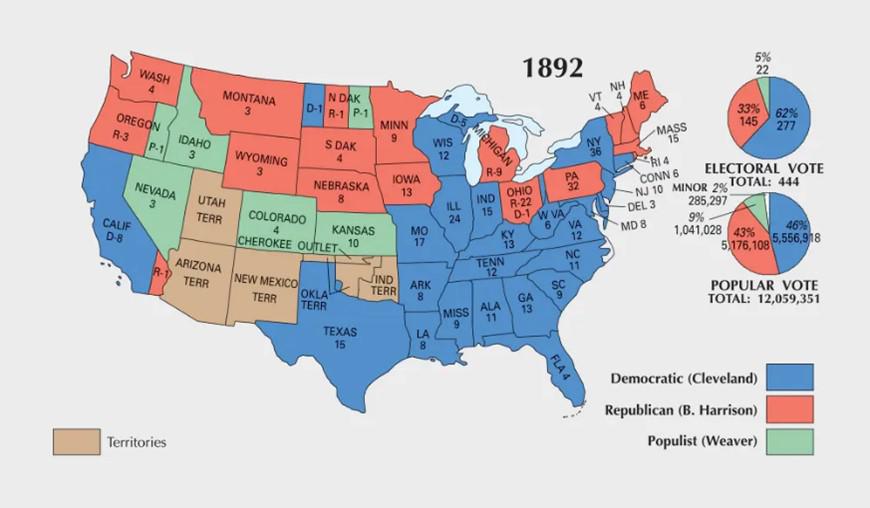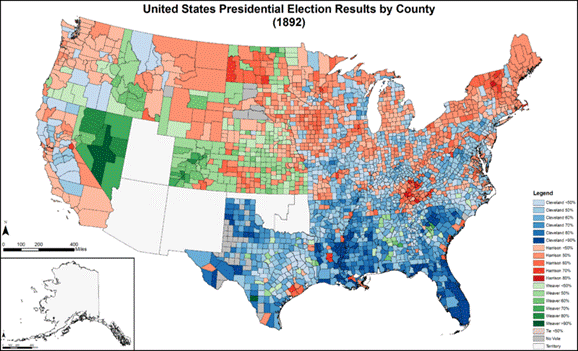Section I: Watch the following video on post-Civil War expansion and
answer the questions.
https://www.youtube.com/watch?v=togDUjZ0Utc&ab_channel=NBCNewsLearn
Questions:
1. How did settlers get land? What did they have to do to keep it?
2. Identify at least three problems facing farmers.
Section II: Farmers Organize
As you saw in the previous video, farmers were at the mercy of eastern-operated railroads, banks and other business that charged high prices and fees. Beginning in the 1870s, they began to organize and cooperate in the form of the Granger movement. They attempted to form their own banks and insurance companies and created cooperatives to market their products in bulk rather than as individuals. They also enacted state laws regulating railroad rates. Unfortunately for them, none of these measures were effective.
Picture Analysis: Look at and study the Granger picture below. Based on your observation, what do you notice about how the Grangers saw themselves, and how they perceived other workers and professionals? Hint: Look for small details, how people are depicted, what they say, etc.

Notes to the teacher:
•A Jeffersonian view of the farmer as a lone independent operator
behind a romantic landscape. He is clean, fit and sturdy
•Notice 1776-1876
•The solider has the blue Union uniform
•The professionals are well dressed, not authentic like the farmer (notice the General Broker says “I Fleece you all”!
•Nothing can operate without the farmer who feeds them all
Section III: Populist Party Emerges
In 1892, farmers created the Populist (Peoples) Party with a national platform with the following goals:
1. Unlimited coinage of gold and silver (Money was backed up by and
convertible into gold. Since gold is a finite resource this kept the
money supply limited, hence deflation or lower prices. This hurt
farmers because it kept their commodity prices low. Coining silver
(which is far more abundant than gold) would vastly inflate the money
supply and increase prices.
2. Popular election of senators (currently the state legislators, often
dominated by corporate interests, selected senators)
3. A graduated income tax to reduce the tariff (tariff rates were very
high on manufactured goods which raised the prices on goods
purchased by farmers. A graduated tax means you pay progressively
more as your earnings increase. This would impact the wealthy.)
4. Public ownership of railroads, telegraphs and telephones
5. One term limit for the presidency
6. Eight-hour day for workers
7. Outlawing of mercenaries specifically Pinkertons (private armies
hired by companies to break labor stoppages, most famously at the
Homestead Strike in 1892)
8. All land granted to railroads “in excess of their actual needs”,
returned to the government (Federal and state governments had
granted millions of acres to the railroads during the 1800s}
9. Support for Knights of Labor [currently the largest labor union in
the nation]
Questions:
1.List what you think are the three most radical/extreme demands and
explain your reasoning [point out how the Populists are challenging
the limited federal power than had defined America up to this
point]
2. Why would farmers call for numbers 6, 7 and 9 since they do not
directly benefit them?
3. What do you think about number 5? What are the pros and cons?
Section IV: Populists Seek Political Power
Realizing that organizing at the state and local level was not effective, farmers created a national one, the Peoples or Populist Party in 1892. They endorsed candidates for the House, the Senate and governorships as well as president and vice-president. Below are election maps from that year:


Questions:
1. How well did the Populists do in their first try at the presidency?
2. What regions are they the strongest in and why?
3. How did they do in the South? How do you explain their
performance there? [Southerners are very loyal to the Democratic
party overthrew Republican rule during Reconstruction. They feared
splitting the vote could open the door for a Republican return to
power.]
Section V: Legacy of the Populists
Though the Democrats absorbed the Populists in 1896, many of their ideas lived on. Since the beginning of American history, we have always esteemed farmers as hearty, independent and vulnerable types who are essential to our way of life and thus deserve government support. For example in 2022, distressed farmers received $3.1 billion in federal assistance (source: US Department of Agriculture).* Populists certainly would have welcomed this! However, many argue that farming has radically changed, and the day of the small family farmer is long over.
Watch the following video on modern agriculture and then answer the questions.
*https://www.fsa.usda.gov/news-room/news-releases/2022/usda-provides-payments-of-nearly-800-million-in-assistance-to-help-keep-farmers-farming
Watch the following video on modern agriculture and then answer the questions.
https://www.youtube.com/watch?v=Dmh28Tylaqo&ab_channel=AmericanEnterpriseInstitute
Questions
1. How has farming changed since the 19th century?
2. Why do farmers, who are less than 1% of the population, receive
such levels of assistance, which also raises food prices?
3. Go back to the Populist Party platform. Which of their goals became
a reality? [Let students do some quick research on it.]


